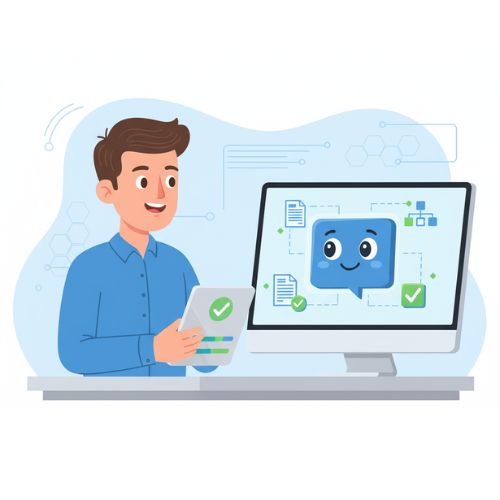How to Determine If You Need Better Policies
Having well-crafted policies in place can have a profound impact on an organization's success. Policies serve as a guide for decision making, help set expectations, and establish accountability. They also help create a sense of stability and provide a framework for resolving conflicts. When policies are effective, they can help organizations achieve their goals, foster a positive work environment, and protect employees, customers, and the organization itself.
However, policies that are outdated, overly complex, or poorly communicated can have the opposite effect. They can slow down progress, lead to confusion and misunderstandings, and even cause frustration among employees. In some cases, policies can become obstacles to change, stifling innovation and making it difficult for organizations to adapt to new circumstances.
This guide explores the various signs and symptoms of outdated or ineffective policies, and provides actionable tips for determining if your organization is in need of a policy overhaul.
Employees regularly bypass or ignore policies.
It's essential to understand that policies are only effective if they're being followed. Employees who regularly bypass or ignore policies are not only compromising the effectiveness of your organization, but they may also be putting the company's reputation and success at risk. Policies serve as a guide for employees to follow, but if they're not aligned with their needs and responsibilities, they can lead to confusion and frustration.
Moreover, employees who repeatedly bypass policies may start to view them as arbitrary and meaningless, which can lead to a lack of trust in the company's leadership. This, in turn, can harm morale and lead to decreased productivity and engagement.
There is a lack of consistency in how policies are applied.
Another sign that your policies need improvement is if there is inconsistency in how they're applied. For example, if one employee is allowed to take long breaks while another is reprimanded for taking a shorter break, it creates confusion and undermines trust.
This lack of consistency can also lead to frustration and resentment among employees, as well as foster a sense of favoritism or unfairness. It's important for policies to be applied consistently and fairly across the board to ensure that everyone is on the same page and working towards the same goals. When there is a lack of consistency in policy application, it can lead to decreased morale and productivity, as well as increased conflict and turnover.
Policies cause delays or reduce efficiency.
Policies that slow down processes and reduce efficiency can harm the success of an organization. When policies are overly complex or outdated, they can create obstacles that prevent employees from completing their work in a timely manner.
In some cases, policies may have been put in place for a specific reason, but over time, the organization's needs and goals may have changed. An outdated policy can be just as harmful as having no policy at all.
Policies are not aligned with your goals and objectives.
Policies should be designed to support the organization's overall mission and vision, not to hold it back. If your policies are not supporting your objectives, they're likely to be counter-productive and cause frustration and confusion among employees. Additionally, a mismatch between policies and objectives can lead to a lack of buy-in from employees, making it difficult to implement changes and achieve your goals.
Looking for a smarter way to support your team?
How to Take Action
If you recognize any of these signs, it's time to take a closer look at your policies and determine whether they're serving you well or not. Here are some steps you can take to assess and improve your policies:
Review your policies regularly.
It's essential to regularly review your policies to ensure that they're still relevant and aligned with your organization's goals and objectives. Consider scheduling a review of your policies at least once a year to identify areas that may need improvement.
When conducting the review, gather input from employees, stakeholders, and other relevant parties to ensure that all perspectives are taken into account. This can help you identify areas where policies are causing problems or may need to be updated. Ask questions like, "Is this policy achieving its intended purpose?" or "Is this policy causing more harm than good?" By evaluating the effectiveness of each policy, you can determine which ones need to be revised or scrapped altogether.
Use metrics to measure the impact of policies.
Another effective way to determine if your policies are working is to use metrics to measure their impact. For example, if you have a policy aimed at improving employee training, you can track employee performance and satisfaction with the training programs over time to see if the policy is having the desired effect. This can help you determine if the policy needs to be revised or if it's working well and should be maintained.
Additionally, tracking metrics related to employee training can help you identify areas of strength and weakness in your programs. This information can be used to refine and optimize your training policies, ensuring that they're effectively preparing employees for their roles and contributing to the overall success of the organization.
Make changes based on data and feedback.
It's important to remember that policies are not set in stone, and they should be adjusted as needed to ensure they continue to serve the organization's goals and needs. By making changes based on data and feedback, you can ensure that your policies are always up-to-date and aligned with your organization's goals and objectives.
Data-driven decision making is a process that involves using data and statistical analysis to inform the decision-making process. By using data, you can gain a deeper understanding of the impact of your policies, and make decisions that are based on evidence, rather than intuition or assumption.
For example, if you've been tracking employee satisfaction with the training programs and you notice a decline, it may indicate that the training policy is in need of revision. By taking a data-driven approach, you can objectively evaluate the impact of your policies and make changes that are likely to result in positive outcomes.
Encourage open communication and collaboration.
By fostering an environment of open communication and collaboration, employees can share their experiences and feedback, which can be valuable in shaping policies that work well for everyone. Encourage your employees to provide feedback and suggestions on policies, and involve them in the policy-making process as much as possible. This can help you to identify issues early and avoid problems before they arise. By creating a culture of collaboration and open communication, you can build a stronger, more effective organization.
Implement new technologies such as artificial intelligence and chatbots.
In addition to encouraging open communication, technology such as chatbots can be used to streamline policy review and ensure that employees have access to the information they need. Chatbots provide employees with instant access to policy information, help navigate complex procedures, and answer questions.
Adopting chatbots can also provide real-time insights into how employees are using policies, helping organizations identify areas where policies are not being followed or causing confusion. This allows for prompt action to address these issues and keep policies up-to-date and aligned with organizational goals on an ongoing basis while eliminating the need to wait a year to review the policies.
Closing Thoughts
Determining if your organization needs better policies requires regularly reviewing policies, gathering feedback, and using metrics to measure their impact. When policies are outdated, overly complex, not followed, inconsistent, or not aligned with your goals and objectives, they can negatively impact the success of the organization. By taking a data-driven approach and making changes based on evidence and feedback, you can ensure that your policies support your organization's goals, foster a positive work environment, and protect employees, customers, and the organization itself.
Answers your employees need, right when they need them
Meet Botable — the AI chatbot that handles everything from simple FAQs to complex, multi-step questions, so your team can focus on what matters. Built for HR, QA, and beyond.
Continue reading
Ready to see what Botable can do for you?
Book your demo now to see how Botable can transform your workplace.
Identify your unique challenges
Flexible pricing options
Easy integrations
Step-by-step implementation plan
Customize Botable for your workflow
Book a demo
.webp)









